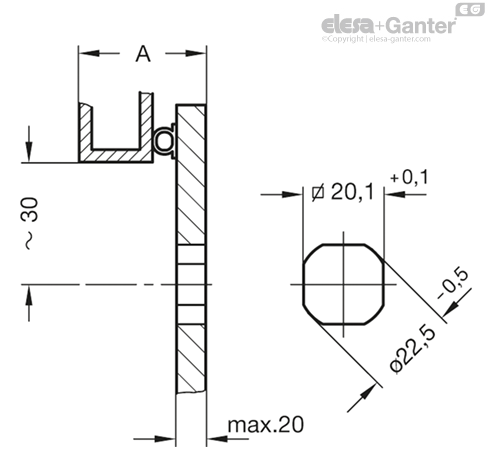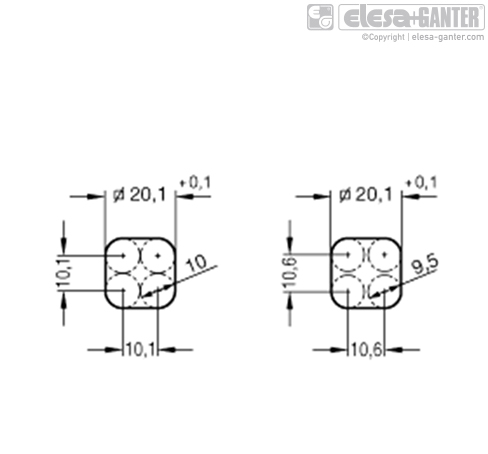
Vergrendelingsafstand A is continu verstelbaar
|
Code
|
Latch distance A in retaining position (clamping position)
|
Latch distance
|

|
|---|---|---|---|
|
|
|
|
|
|
GN 516.1-DK-A1
|
A 1 (l = 40.5)
|
1 ... 11
|
80
|
|
GN 516.1-DK-A2
|
A 2 (l = 40.5)
|
11 ... 21
|
100
|
|
GN 516.1-DK-A3
|
A 3 (l = 56)
|
21 ... 31
|
102
|
|
GN 516.1-DK-A4
|
A 4 (l = 56)
|
31 ... 41
|
118
|
Housing / Locking mechanism
Zinc die casting
Locating ring
plastic coated, black, textured finish
Latch
Zinc die casting
all handles (Type RG / KG / HG)
Protective cap CR Neoprene©
Protection class: IP 65
The rotary clamping latches GN 516.1 have a closing mechanism which transfers the rotary movement of the operating element (key) into a 90° turn and then into a 6 mm linear stroke.
This mechanism is designed for common applications such as making a tight and vibration-proof interlock in the end position (retaining position) in connection with the protective cap.
A 10 mm adjustment within the latch distances A1 ... A4 can be achieved by the set screw M6. This covers a latch distance from 1 to 41 mm consistently.



1. Latch in starting position.
2. The first 90° turn of the actuator / key moves the latch into the usual locking position.
3. Turning the actuator further by another 90° will lift the latch in linear direction by 6 mm, pulling the door leaf against the frame or the seal and generating a vibration-proof lock.
max. torque: 4.5 Nm
max. axial force: 340 N
max. static load: 340 N
For installation, set a bore diameter in the door as shown in the outline drawing. Once assembled, the rotary clamping latch is pushed through the bore diameter from the front. The hexagonal nut can then be pushed over the latch from the back and bolted in place.
The installation bore diameter in the door leaf is usually generated by punching or laser application in series production.
For small series and steel sheets below 2 mm thickness, the sheet metal punshes GN 123 are the tool of choice.
The installation bore diameter can also be set by drilling / milling as shown in the outline drawings.